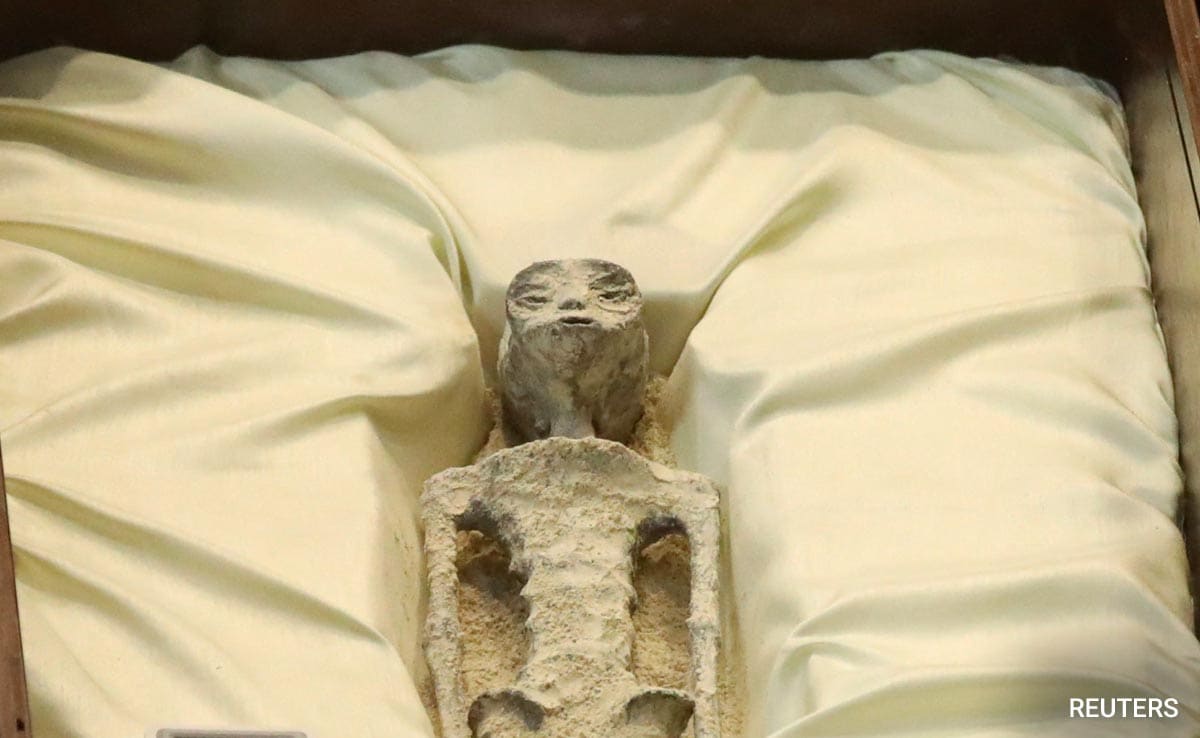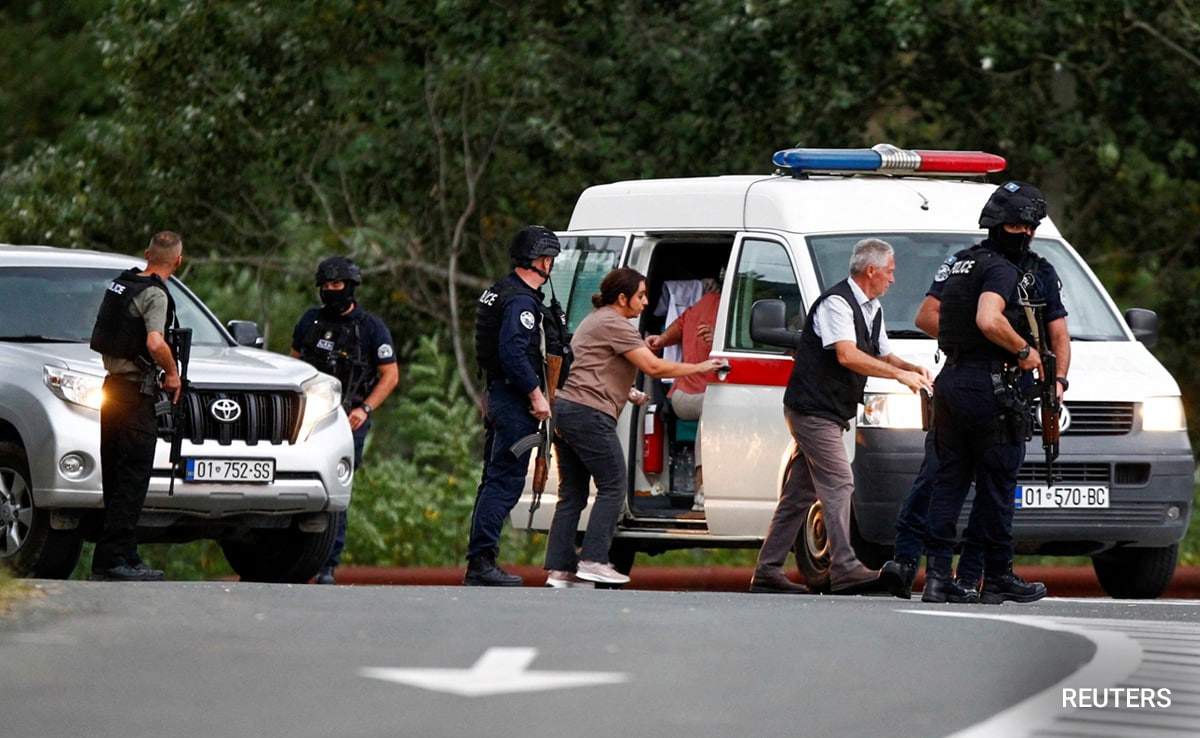Israeli airstrikes pounded locations across the Gaza Strip early Thursday, including parts of the south that Israel had declared as safe zones, heightening fears among more than 2 million Palestinians trapped in the territory that nowhere was safe.
In the nearly two weeks since a devastating Hamas rampage in southern Israel, the Israeli military has has relentlessly attacked Gaza in response. Even after Israel told Palestinians to evacuate the north and head to what it called “safe zones” in the south, strikes continued overnight throughout the densely populated territory.
A residential building in Khan Younis, a city in southern Gaza where hundreds of thousands of Palestinians had fought shelter, was among the places hit. Medical personnel at Nasser Hospital said they received at least 12 dead and 40 wounded.
The bombardments came after Israel agreed on Wednesday to allow Egypt to deliver limited humanitarian aid to Gaza, the first crack in a punishing 11-day siege. Many among Gaza’s 2.3 million residents have cut down to one meal a day and resorted to drinking dirty water.
The announcement of a plan to bring water, food and other supplies into Gaza came as fury over a Tuesday night explosion at Gaza City’s al-Ahli Hospital spread across the Middle East. There were conflicting claims of who was behind the blast, which the Hamas-run Health Authority said had killed hundreds of Palestinians.
Hamas officials in Gaza blamed an Israeli airstrike, saying hundreds were killed. Israel denied it was involved and released a flurry of video, audio and other information that it said showed the blast was instead due to a rocket misfire by Islamic Jihad, another militant group operating in Gaza. Islamic Jihad dismissed the Israeli claim.
The Associated Press has not independently verified any of the claims or evidence.
U.S. President Joe Biden, who visited Israel on Wednesday, said data from his Defense Department showed the explosion was not likely caused by an Israeli airstrike. The White House later said an analysis of “overhead imagery, intercepts and open-source information” showed Israel was not behind the attack. But the U.S. continues to collect evidence.
Video from the scene showed the hospital grounds strewn with torn bodies, many of them young children. Hundreds of wounded were rushed to Gaza City’s main hospital, where doctors already facing critical supply shortages were sometimes forced to perform surgery on the floors, often without anesthesia.
More than 1 million Palestinians, roughly half of Gaza’s population, have fled their homes in Gaza City and other places in the northern part of the territory since Israel told them to evacuate. Most have crowded into U.N.-run school shelters or the homes of relatives.
Following early Thursday’s airstrikes, sirens wailed as emergency crews rushed to rescue survivors from a building where many residents were believed trapped under misshapen bed frames, broken furniture and cement chunks.
A small, soot-covered child, unconscious and dangling in the arms of a rescue worker, was taken out of a damaged building and rushed toward a waiting ambulance.
The Israeli military said it killed a top Palestinian militant in Rafah, near the Egyptian border, and hit hundreds of targets across Gaza, including tunnel shafts, intelligence infrastructure and command centers. It said it hit dozens of mortar launching posts, most of them immediately after they launched shells at Israel. Palestinians have been launching barrages of rockets at Israel since the fighting began.
Israel has said it is attacking Hamas militants wherever they may be in Gaza, and accused the group’s leaders and fighters of taking shelter among the civilian population, leaving Palestinian feeling in constant danger.
The Musa family fled to the typically sleepy central Gaza town of Deir al-Balah and took shelter in a cousin’s three-story home near the local hospital. But at 7:30 p.m. Wednesday, a series of explosions, believed to be airstrikes, rocked the building, turning the family home into a mountain of rubble that they said buried some 20 women and children.
The dead body of Hiam Musa, the sister-in-law of Associated Press photojournalist Adel Hana, was recovered from the wreckage Wednesday evening, the family said. They don’t know who else is under the rubble.
“It doesn’t make sense,” Hana said. “We went to Deir al-Balah because it’s quiet, we thought we would be safe.”
The Israeli military said it was investigating.
In northern areas that Israel warned to evacuate, airstrikes also hit three residential towers in al-Zahra, the Hamas-led Interior Ministry in Gaza said, as well as homes along the border with Israel. Israel has massed troops in the area and is expected to launch a ground invasion into Gaza, though military officials say no decision has been made.
The Gaza Health Ministry said 3,478 people have been killed in Gaza since the war began, and more than 12,000 wounded, mostly women, children and the elderly. Another 1,300 people are believed buried under the rubble, health authorities said.
More than 1,400 people in Israel have been killed, mostly civilians slain during Hamas’ deadly incursion on Oct. 7. Roughly 200 others were abducted. The Israeli military said Thursday it had notified the families of 203 captives.
Violence between Israel and Hezbollah militants in Lebanon has also flared in recent days amid fears the fighting could spread across the region. In the West Bank, where scores of Palestinians have been killed since the war started, Israeli forces killed dozens of Palestinians in the past two days, according to the Palestinian Health Ministry.
The deal to get aid into Gaza remained fragile, as hospitals in the sealed territory say they are on the verge of collapse.
Biden said Egypt’s president agreed to open the Rafah crossing to let in an initial group of 20 trucks with humanitarian aid. If Hamas confiscates aid, “it will end,” he said. The aid will start moving Friday at the earliest, White House officials said.
Egypt must still repair the road across the border, which was cratered by Israeli airstrikes. More than 200 trucks and some 3,000 tons of aid are positioned at or near the crossing, Gaza’s only connection to Egypt, said the head of the Red Crescent for North Sinai, Khalid Zayed.
Supplies will go in under supervision of the U.N., Egyptian Foreign Minister Sameh Shoukry told Al-Arabiya TV. Asked if foreigners and dual nationals seeking to leave would be let through, he said: “As long as the crossing is operating normally and the (crossing) facility has been repaired.”
Israeli Prime Minister Benjamin Netanyahu’s office said the decision was approved after a request from Biden. It said Israel “will not thwart” deliveries of food, water or medicine from Egypt, as long as they are limited to civilians in the south of the Gaza Strip and don’t go to Hamas militants. The statement made no mention of fuel, which is badly needed for hospital generators.
Relatives of some of the people who were taken hostage and forced back to Gaza during the Oct. 7 Hamas attack reacted with fury to the aid announcement.
“Children, infants, women, soldiers, men, and elderly, some with serious illnesses, wounded and shot, are held underground like animals,” said a statement from the Hostage and Missing Families Forum. But “the Israeli government pampers the murderers and kidnappers.”
In his brief visit, Biden tried to strike a balance between showing U.S. support for Israel, while containing growing alarm among Arab allies. He also announced $100 million in humanitarian aid for Palestinians in Gaza and the West Bank.
British Prime Minister Rishi Sunak arrived in Israel on Thursday in a trip aimed at showing solidarity after the Hamas attack and preventing the war from escalating.
The people of Israel had “suffered an unspeakable, horrific act of terrorism and I want you to know that the United Kingdom and I stand with you,” he said on arriving.














